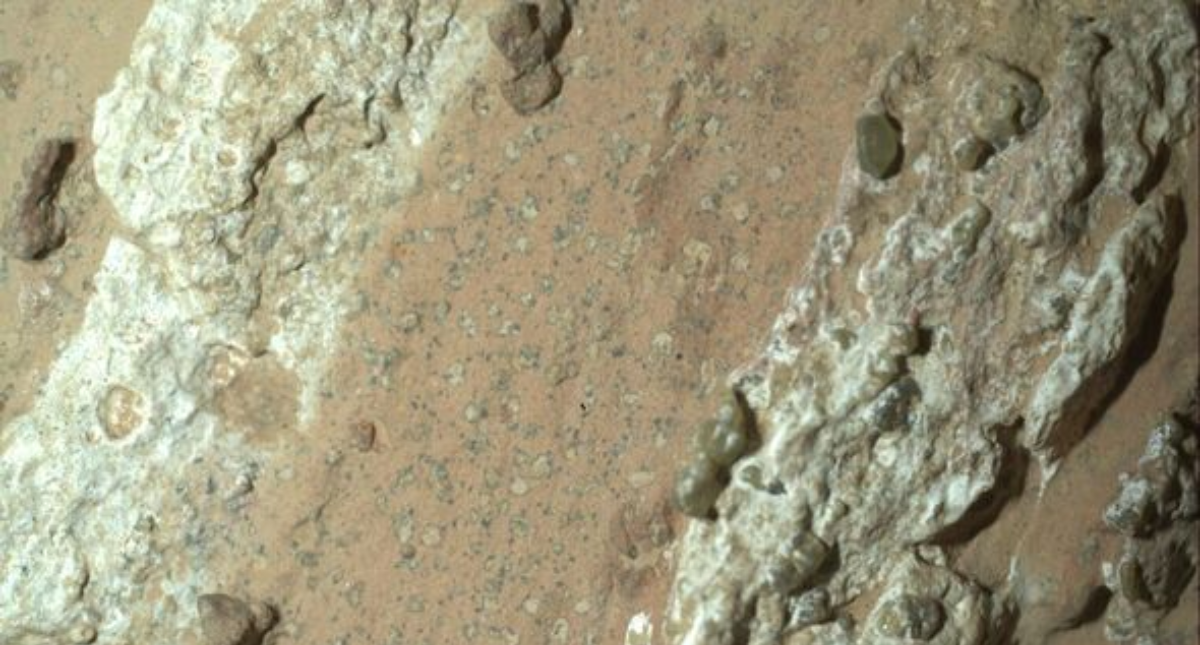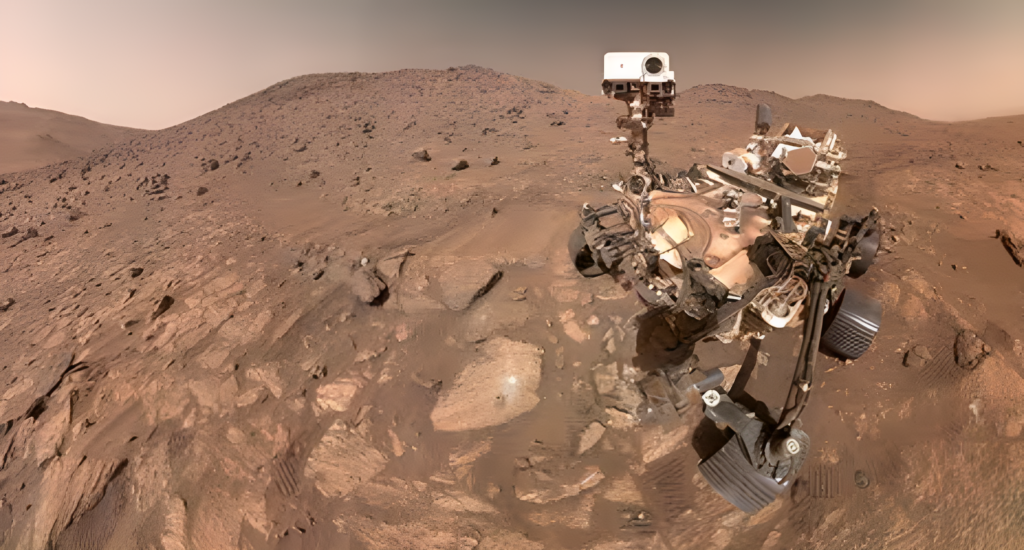
NASA has once again ignited the world’s curiosity with a discovery that could reshape our understanding of life in the universe.
This time, it’s not just about the distant stars or planets, but about our neighboring planet, Mars. The Red Planet, which has long been the subject of intense scientific study, might have once harbored life.
Yes, you read that right—NASA’s latest findings offer compelling evidence of past life on Mars. The news is groundbreaking, sparking excitement and curiosity across the globe.
Through NASA’s advanced technology and years of research, we are now closer than ever to answering one of humanity’s biggest questions: Are we alone in the universe?
In this article, we’ll explore this astonishing discovery in detail. From the signs of past life detected on Mars to the sophisticated instruments that made this possible, we’ll break down everything you need to know.
We’ll also touch on the significance of this discovery and what it means for future space exploration.
NASA Made a World-Shaking Discovery
Yes, NASA has found compelling evidence that suggests Mars may have once supported life. This incredible discovery was made by NASA’s Perseverance rover, which has been exploring Mars’ Jezero Crater, a 28-mile-wide crater that scientists believe was once filled with water.
The rover discovered a unique rock formation that contains three critical clues pointing to the possibility of ancient microbial life: the presence of water, organic compounds, and a chemical energy source.
The rock, nicknamed “Cheyava Falls,” shows vertical veins of calcium sulfate, which likely formed from past water. The rock also contains organic compounds, essential life building blocks.
Moreover, chemical reactions within the rock might have provided energy for ancient microbes. The combination of these three factors—water, organic compounds, and a chemical energy source—makes this discovery extraordinary.
Ben Affleck and Kick Kennedy: Is There a New Romance? What We Know So Far
While these elements have been found separately in the past, this is the first time all three have been discovered in one location on Mars, making it the strongest evidence yet that life may have once existed on the Red Planet.
The Role of Perseverance in Uncovering Martian Secrets
The Perseverance rover has been a key player in NASA’s mission to explore Mars and search for signs of past life.
Launched in July 2020, Perseverance landed on Mars in February 2021. Its primary mission has been to explore the Jezero Crater, which scientists believe was once home to a large lake.
This crater was chosen because of its rich geological history, making it an ideal location to search for signs of ancient life.
Perseverance is equipped with advanced instruments that allow it to analyze the Martian surface in unprecedented detail.
Among these instruments are SHERLOC (Scanning Habitable Environments with Raman & Luminescence for Organics & Chemicals) and PIXL (Planetary Instrument for X-ray Biochemistry).
These tools have enabled Perseverance to detect organic compounds and analyze the chemical composition of rocks in the Jezero Crater, leading to this groundbreaking discovery.
But Perseverance’s mission doesn’t stop at just detecting signs of life. It is also tasked with collecting samples of Martian soil and rock that could one day be brought back to Earth for further analysis.
This sample collection could provide definitive answers about the existence of past life on Mars, but for now, Perseverance is doing the heavy lifting of exploring and gathering critical data.
What Makes This Discovery Different?
While NASA has previously found evidence of water on Mars and other hints that the planet might have been habitable in the past, this discovery is different because it brings multiple pieces of evidence together.
The combination of water, organic compounds, and chemical reactions in a single location is what makes this finding so compelling.

Scientists are particularly excited about the presence of organic compounds. These compounds are made up of carbon and are considered the building blocks of life.
On Earth, organic compounds are found in all living things, so their presence on Mars is a strong indicator that life may have once existed there.
Additionally, the chemical reactions detected in the rock suggest that ancient Martian microbes could have used these reactions as a source of energy.
This is similar to how some microbes on Earth survive in extreme environments, such as deep-sea hydrothermal vents.
The idea that life on Mars could have survived similarly adds a new dimension to our understanding of life in the universe.
The Significance of Cheyava Falls
Cheyava Falls, the rock formation where this discovery was made, is now considered one of the most significant locations in NASA’s search for past life on Mars.
The rock’s unique composition and the presence of organic material make it a prime candidate for further study.
NASA scientists believe that Cheyava Falls could hold the key to understanding whether life ever existed on Mars.
The rock’s location in the Jezero Crater, combined with its geological features, suggests that it may have once been part of a riverbed or lake, providing an ideal environment for microbial life.
This discovery also raises important questions about Mars’ past climate. If water existed on Mars in the past, what happened to it?
Was Mars once a warm, wet planet like Earth, and if so, what caused it to become the cold, dry planet we see today?
These are questions that scientists are eager to answer as they continue to study Mars and its history.
What’s Next for Mars Exploration?
While this discovery is a major milestone in the search for life on Mars, it is far from the final answer.
Scientists still need to conduct more research to confirm whether the organic compounds found in Cheyava Falls are true signs of past life or if they could have formed through other processes.
One of the next big steps in Mars exploration will be bringing samples back to Earth. NASA is currently working on a mission to retrieve the samples collected by Perseverance and bring them back for detailed analysis in laboratories.
This mission, however, comes with significant challenges and a hefty price tag, estimated at around $11 billion.
Despite these challenges, the potential rewards are immense. Bringing Martian samples back to Earth could provide definitive proof of past life on Mars and open up new possibilities for understanding the history of our solar system.
In the meantime, Perseverance will continue its mission on Mars, exploring new areas of the Jezero Crater and collecting more data.
With each discovery, we get closer to answering one of humanity’s most profound questions: Are we alone in the universe?
Tobey Maguire’s Ex-Wife Jennifer Meyer Engaged to Billionaire Heir Geoffrey Ogunlesi
Conclusion
NASA’s discovery of compelling evidence of past life on Mars is a monumental achievement in space exploration.
It marks a new chapter in our understanding of the Red Planet and opens up exciting possibilities for the future.
As we continue to explore Mars and other celestial bodies, who knows what other secrets we might uncover?
One thing is for sure: NASA’s mission to discover life beyond Earth is far from over, and the next big discovery could be just around the corner.
